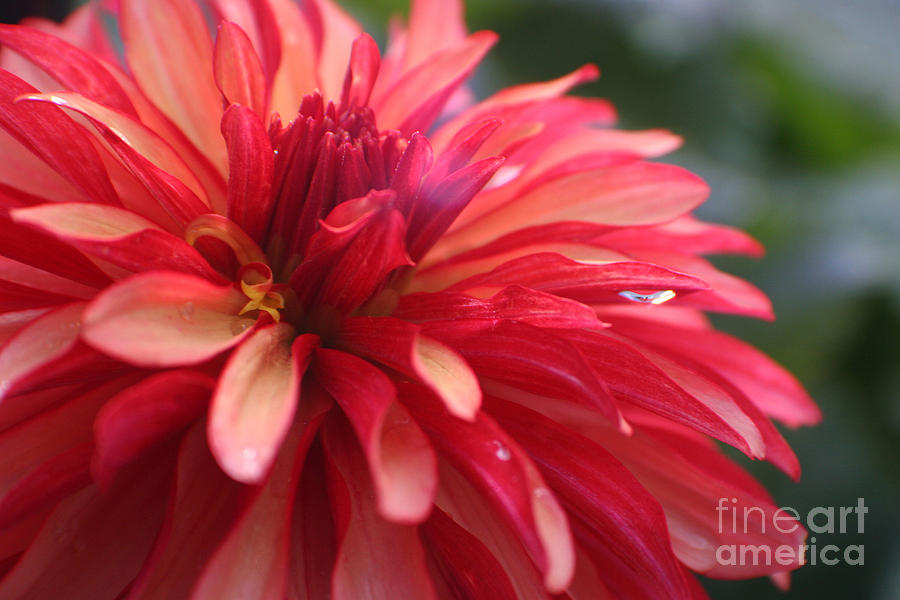
Raindrops and Dahlia

by Jeanette French
Title
Raindrops and Dahlia
Artist
Jeanette French
Medium
Photograph - Photography
Description
Raindrops and Dahlia
Dahlia bejeweled with diamond raindrops her skirts flared, just like a flamenco dancer, actually is a native of Mexico, Columbia and Central America. She is is related to sunflowers, daisies, chrysanthemums, and zinnias. In 1963, the dahlia was declared to be the national flower of Mexico. Hybrids of at least 36 different species are often grown as garden flowers. Flowers have many variations in form. They can be as small as 2 inches in diameter and as large as a dinner plate, up to 12 inches in diameter. This tremendous variety in a single species comes from the fact that dahlias have eight sets of homologous chromosomes, unlike most plants that have 2 sets. And, along with that unique development, dahlias have many transposons, genetic bits that can move about on an allele, allowing even more diversity.
Dahlias are bushy, tuberous, herbaceous plants. They are perennial in their native habitats, which do not experience frost. The tuberous stems are quite leafy and can range in height from 12 inches to over 8 feet. The tuberous nature of the stems makes it possible for the plants to survive periods of dormancy, which allows gardeners, living in temperate climates with frosts, to dig the tubers and store them for the winter, replanting in the spring. Dahlias attract pollinating insects with their bright colors versus scent. The color range for dahlias includes most colors, excepting blue.
The earliest known description of the dahlia was in 1570; identified by a Spanish physician for King Philip II, Francisco Hernandez, who had been sent to Mexico to study the plants of the country. Indigenous peoples gathered wild dahlias and also cultivated them as food sources. Aztec peoples used dahlias to treat epilepsy.
Energetically, the dahlia actually has the delicate, watery, mysterious, moonlight qualities that reveal the beauty and sweetness in darkness and shadow. Dahlia flower essences know all about engaging the dark with joy and delight, releasing any stagnant lower vibrations.
The Dancing Dahlia image was photographed with a macro lens. Macrophotography is an extreme close-up photo in which the subject size in the image is life size or greater than life size. The ratio of the subject on the plane of the sensor plate is known as the reproduction ratio. A macro lens is usually capable of producing images greater than 1:1. Reproductions of greater that 1:1 are also known as photomicrography. In this digital age, a macro photograph is practically defined as a photograph with its vertical subject matter at a height of 24mm or less.
Creating portals of light, love, joy, beauty, compassion, hope and gratitude is my lifelong passion and gift for the earth, hence the name of my art business, For the Earth. My mother painted in oils when I was young and encouraged my own drawing, painting and handcrafting in all forms. My father, the photographer, gave me my first camera at age 8. As a result of these loving influences, I am a lifelong student of both mediums. I am grateful to my wonderful Pacific NW painter teachers, Stan Capon and Edi Olson, for training my eye and technique. I hope you will enjoy this image as much as I enjoyed its creation. More gifts for the earth can be found at these websites: jeanette-french.artistwebsites.com and jeanette-french.pixels.com.
Uploaded
February 13th, 2013
Statistics
Viewed 459 Times - Last Visitor from Fairfield, CT on 04/17/2024 at 4:40 AM
Embed
Share
Sales Sheet
Comments
There are no comments for Raindrops and Dahlia. Click here to post the first comment.































